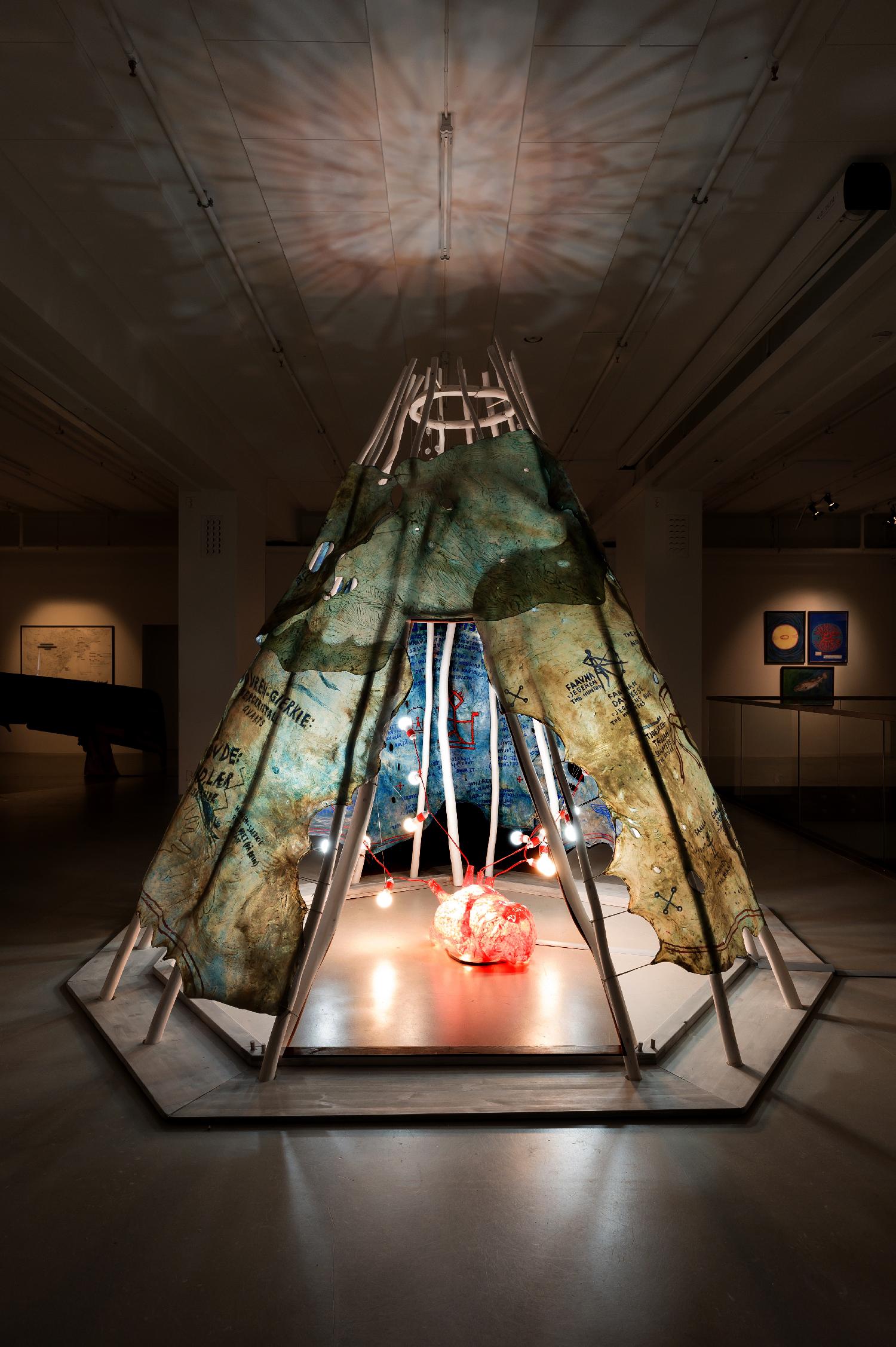2023_Guest Lecture_Sissel M. Bergh

20.10.2023
Entitled Hovrengåetie - A material and linguistic examination of the South Sámi word for moose skin and its connection to the sky, myths, and history, WONA invited artist Sissel M. Bergh as part of WONA’s autumn 2023 digital lunch lecture series to talk particularly about her work Hovrengåetie/Sky Skin. This work was Bergh’s contribution to the opening of the new National Museum in Oslo in 2022, amongst others with a wish to offer a subtle way of decolonizing the self-image of the Norwegian state. Based on the traditional South Sámi gåetie/gamme (housing) structure and the word for leather/moose skin HOVREHOVDE, in this lecture Bergh explored how the South Sámi language may hold the keys to uncovering history in land areas encompassing Fennoscandia.
Sissel M. Bergh is an artist from Southwest Sápmi. Through film, objects, paintings, drawings and text she investigates how to relate to and understand the physical and invisible world(s), and questions how we can reread our relationship with land and inhabitants, memory, power and magic. Her interest lies in the internal logic of South Sámi language. In her work history and land is seen as archived within language, and thus it is also through the knowledge we have of language that we can unravel the past and reconnect to the local environment. In 2020, she was part of Nirin, the 22nd Biennale of Sydney. In 2019, she was part of Gøteborg International Biennale of Contemporary Art. Recent exhibitions include Speaking back at Kunsthaus Hamburg, Kunna, Guanna, Concha at Kunsthall Trondheim, I Call it Art at the National Museum of Norway and Alakkaajut at Urban Shaman gallery, Winnipeg, Canada. Bergh was educated at the National Academy of Fine arts Oslo, and University of Technology in Durban, South Africa. She was based in Lusaka, Zambia for several years before she returned to Traante/Trondheim in 2009.
The lunch lecture was a collaboration between Huksenvieru Sátnegirje - Sámi Architectural Dictionary (HUSA) and the research group Worlding Northern Art (WONA).